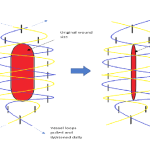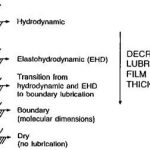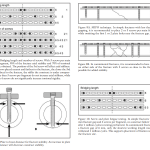Table of Contents
Remember WIPER before patient examination
The local musculoskeletal examination is carried out following the general physical examination.
The orthopedic examination proceeds in the sequence of: Look, Feel, Move, Measure, Neurovascular examination, Special tests and Neighboring joint examination.
It should flow with patient in: Walking, Standing, Sitting, Supine, Lateral, Prone.
1. Inspection (Look)
Mnemonic: SEADS GO
Look from: Anterior, Sides and Posterior
- Skin changes including swelling
- Edema
- Atrophy
- Deformity
- Shape, Symmetry and Shortening
- Gait
- Orthosis, walking aid, shoes wear
2. Palpation (Feel)
Mnemonic: TEST Areas
- Temperature
- Effusion
- Swelling examination (Lump examination – mnemonic approach)
- Tenderness
- Areas of emphasis
3. Active and Passive ROM (Move)
- Painful movements at last (to prevent overflow of painful movement to next movement)
- Active ROM first, then passive ROM – measure angles (goniometer) or distances and determine the end feel of joint, presence of crepitus or clicks
- Beighton’s score – for assessing generalized ligament laxity
4. Measurement
- Limb lengths
- Limb circumference
4. Neurovascular examination
a. Motor power and sensations around the joint
- Resisted isometric movements: MRC grading –
- M0 – No contraction
- M1 – Flickering
- M2 – Movement with gravity eliminated
- M3 – Weak movement against gravity
- M4 – Movement against gravity and partial resistance
- M5 – Normal power
- Sensation: Light touch, Pin prick, Temperature, Stereognosis, 2 point discrimination, Proprioception; MRC grading –
- S0 – Absence of all modalities
- S1 – Deep pain sensation
- S2 – Protective skin sensation (skin touch, pain and temperature)
- S3 – S2 with accurate localization
- S3+ – Stereognosis, 2 point discrimination recovery
- S4 – Normal sensation
b. Peripheral pulsations:
- Dorsalis pedis artery: Just lateral to tendon of EHL (absent in 10%)
- Posterior tibial artery: 2 cm below and posterior to medial malleolus (between FDL and FHL tendons)
- Anterior tibial artery: midway between 2 malleoli against distal tibia, just lateral to EHL tendon
- Popliteal artery: with knee flexed 40 degrees (to relax muscles), in lower part of popliteal fossa against the posterior aspect of tibial condyles
- Femoral artery: just inferior to mid-inguinal point
- Radial artery: at wrist just lateral to FCR tendon
- Brachial artery: just medial to tendon of biceps at elbow
c. Regional lymph nodes:
- Cervical: submental, submandibular, preauricular, tonsillar, supraclavicular, deep cervical, scalene, posterior auricular, occipital nodes
- Axillary: anterior, central, posterior, lateral and apical groups
- Epitrochlear: medial aspect of elbow, 4-5 cm superior to humeral epitrochlea
- Inguinal:
- Horizontal chain: just below inguinal ligament
- Vertical chain: along the line of saphenous vein
5. Special tests
- Stress/provocation testing
- Stability testing
6. Examination of adjacent joints
Local musculoskeletal examination must be followed by a systemic examination.





